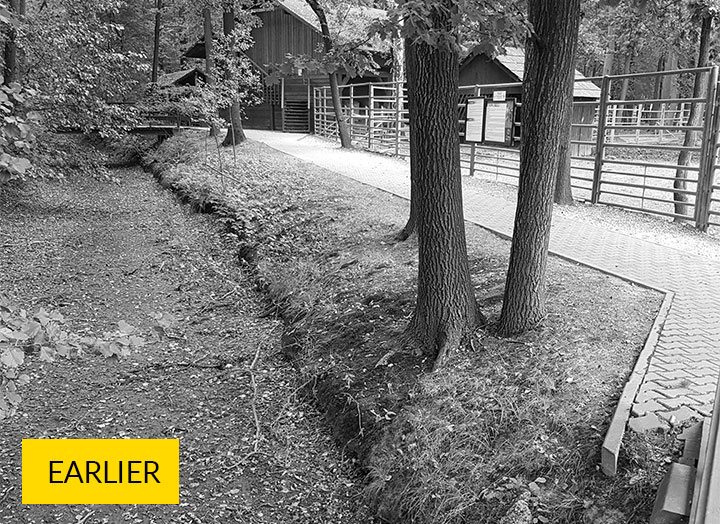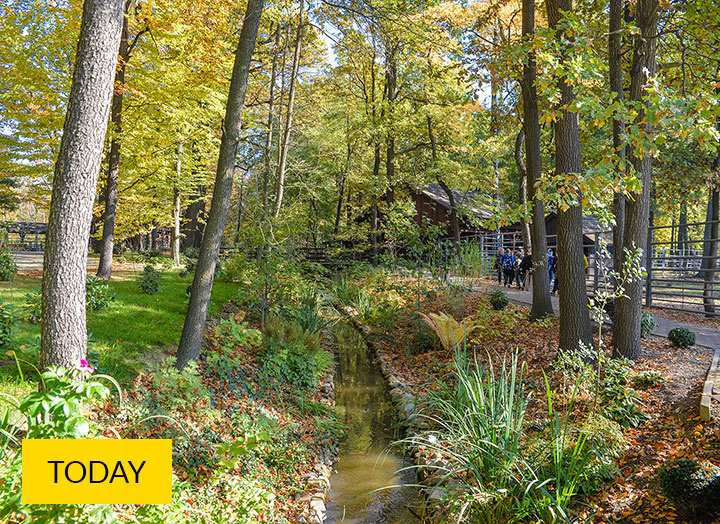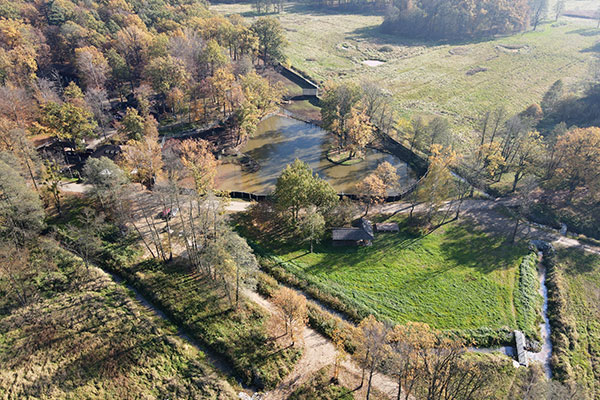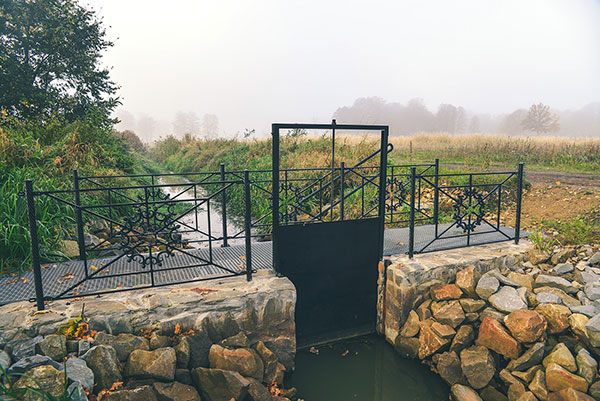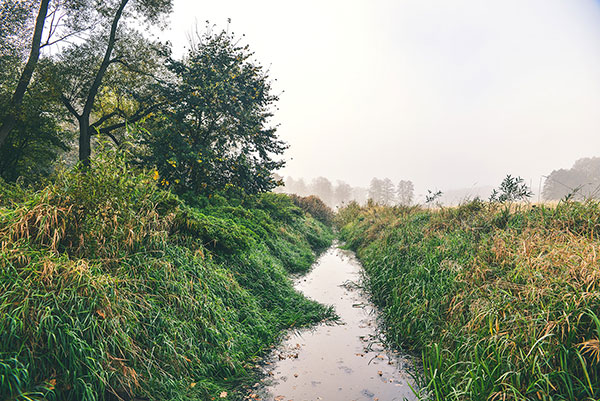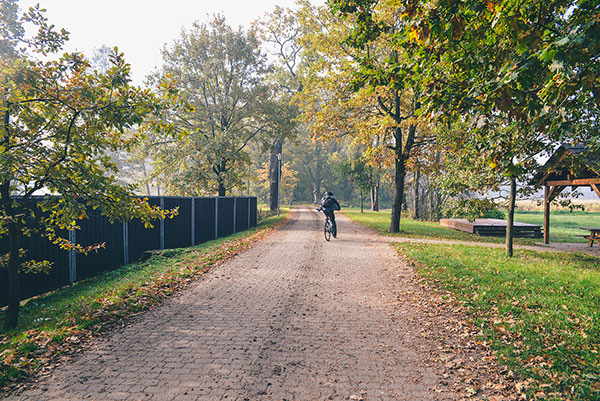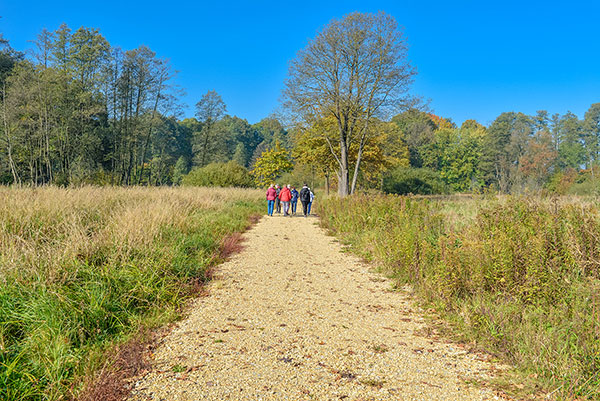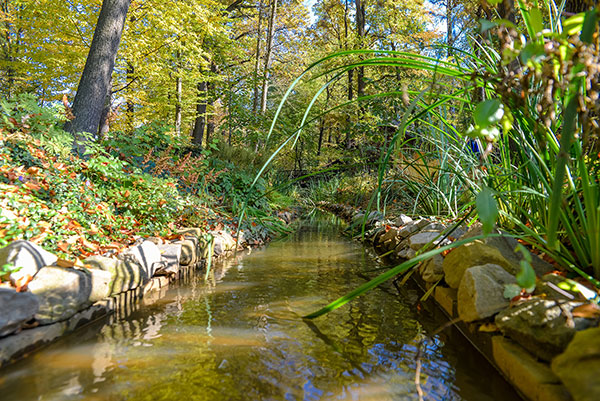Live in harmony with nature
“Fantastic for a full-day family trip.” “Beautiful all year round.” “Situated in the forest, close to the river and ponds.” These are random online reviews of Zwierzyniec Park in Pszczyna. Locals and tourists also love the place for the opportunity to have close contact with nature. EU funds made it possible to revitalize the park as well as restore and protect the numerous animal and plant species that live here. Through educational programs, many residents have learned that protecting ecosystems is one of the most important challenges of our times.
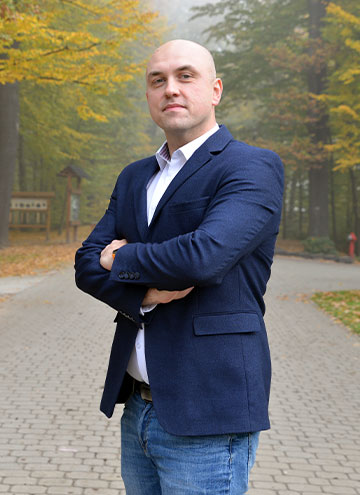
Adam Kuś
Head of the Development and European Funds Department of Pszczyna Municipal Office
With its picturesque scenery, atmosphere and rich history, Pszczyna is a charming town. While taking care of our city, we also take care of its local nature, abundance and diversity. This time our task was to protect endangered species of plants and animals living in the “Zwierzyniec Park”. The area stretching along the Pszczynka River, also known as the “Wild Promenade”, is a part of the Pszczyna Historic Park. The area, which was created after the large city pond had been drained in 1792, is an attractive place for both leisure and recreation. The park’s biggest attraction is the Polish Bison Show Park, which can be observed from a viewing platform. It made the Pszczyna Historic Park famous throughout Poland. However, it should be remembered that there are many other valuable animal and plant species in the area. The work of revitalizing and protecting the park’s biodiversity was carried out on a very large scale and it was not easy due to the need to protect the numerous species of birds, insects and plants living in the area.
Thanks to EU support, we have rebuilt ditches, renovated the road to the so-called “Biber” (German word for beaver, it is also the name of the section of the Pszczynka River where these animals can be found – editor’s note), created a pond for waterfowl and an educational path with equipment for environmental and nature education. We have installed nesting boxes for birds and bats. Planting restored meadows was also very important. The project also enabled us to purchase the equipment to maintain the restored green spaces.
Another important component of the project was an educational campaign to raise public awareness of biodiversity and point out the need to protect endangered species. We conducted field lessons for the students of our schools, and published a brochure on the natural values of the park. This way children, teenagers and adults visiting the park know that in the ecosystem all organisms are connected to each other by a network of dependencies, and the extinction of each species means an irreversible and very dangerous loss. This is because we do not know how the loss of one element of the ecosystem will affect other dependent species.
The implementation of the investment has enriched Pszczyna’s tourist offer. Visitors to the park can explore the environment, melt into it and relax without posing a threat to local flora and fauna.
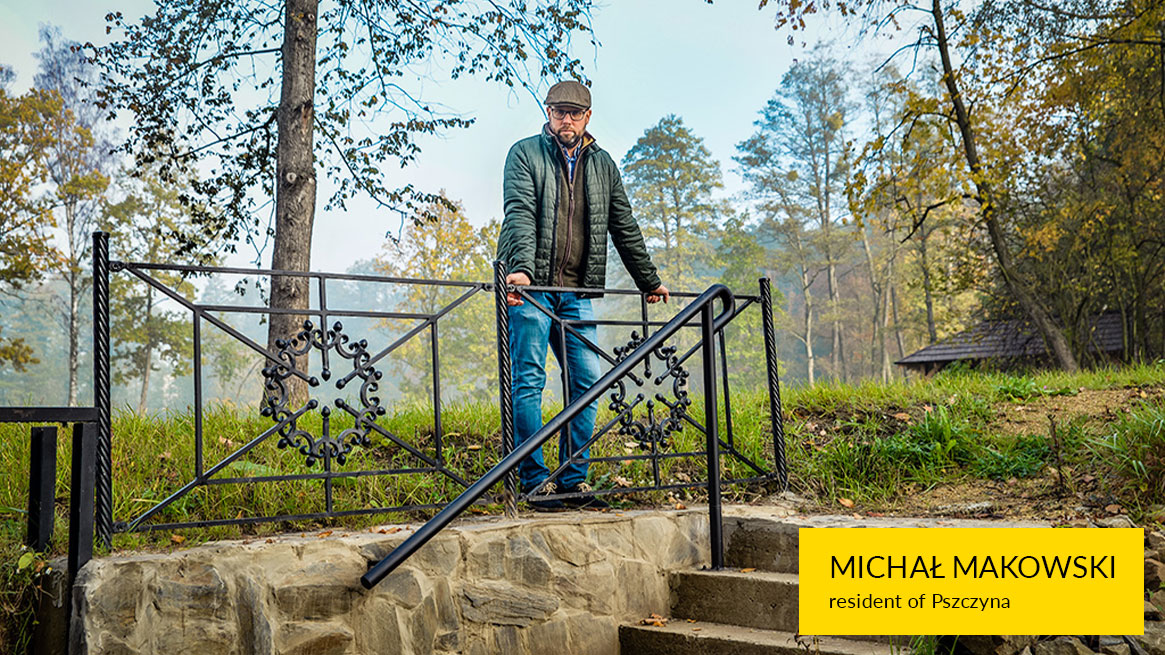
I believe that education and all activities aimed at preserving the richness of nature, especially in cities where there is little room for nature, should become a standard, good practice and an example for others. We owe it to our children and future generations. City parks, green spaces, mid-field balks, and rows of roadside trees allow us to have direct contact with nature.
I am connected with the Pszczyna Historic Park both professionally and privately. Although I visit this place every day, I remain consistently impressed by the abundance of wild life found throughout the park complex. Thanks to a network of canals, watercourses and ponds, you can meet kingfishers, black-crowned night herons and cranes, and if you’re lucky, you can hear an otter or spot beavers. In the park, we have a unique opportunity for direct, even tangible contact with the surrounding nature. The best time to visit this area is in the early morning and after dark, when the fauna world is most active. If you haven’t experienced it yet, be sure to come and see for yourself. At this time of the day, the Pszczyna Historic Park gives the impression of a mystical, mysterious place. The uniqueness of the area is shaped by the massive ancient forest that has been fortunately preserved here, as well as numerous meadows along with floodplains.
I am really glad that thanks to EU funds it has become possible to diversify the microhabitats of insects, reptiles, amphibians, birds, and small mammals. Hanging nesting boxes for birds and shelters for bats definitely has a positive impact on the biodiversity of the site.
I would also like to mention the very important didactic role played by the Pszczyna Historic Park. I firmly believe that education is possible and even necessary at any age. Shaping and strengthening environmental awareness is essential so that together we can effectively engage in activities to protect and shape the environment in a responsible way. Thanks to information signs placed in various places in the park, on the area of the so-called “Wild Promenade”, you can learn a lot of interesting facts about the lives, origins and habits of animals that inhabit our park and more. It’s a perfect place for a stroll after visiting the Castle Museum, where you can feel the splendor of the Belle Époque and learn about the history of the Polish bison in the Polish Bison Show Park, which Pszczyna is famous for.
Say it the Silesian way:

kadubek:
feeder

krzikopa:
ditch, stream

zorta:
species, variety
Project:
Protecting biodiversity through the revitalization of Pszczyna Park in Pszczyna
Beneficiary: Pszczyna Municipality
Project value: approx. 5.5 million PLN
RPO SV co-financing: approx. 2.7 million PLN
Implementation period: June 2017 - August 2022






